The Cretto di Burri
In 1968, the hillside town of Gibellina was devastated by a 6.1-scale earthquake. Somewhat like the residents of Noto, who befell a similar fate, the town decided to abandon the ruins and start from scratch in a location which was close by, and hopefully more stable. Between 1985 and 1989, an Italian artist named Alberto Burri used the old city’s ruins as the canvas for his most audacious work of modern sculpture. The resulting concrete cemetery is a bold piece of art, a comment on death, and a moving tribute to the devastated city.
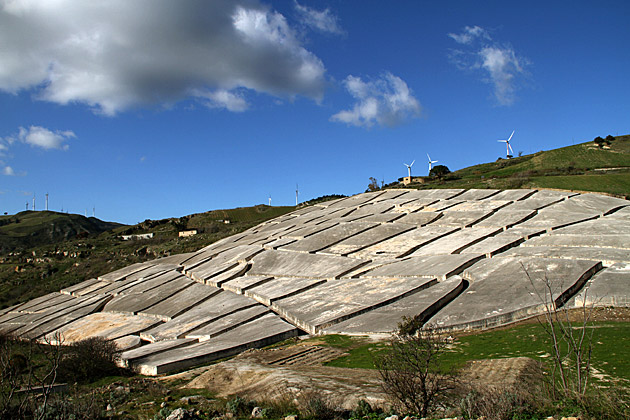
Burri covered the streets of Old Gibellina with concrete, preserving the layout of the blocks. Walking around his monument is unsettling. You’re not just standing on the gravestone of a city, but actually tracing the lines of its corpse. Block after block of grey concrete rises from the ground, like the ghosts of buildings. They’re high enough to peer over, so that the rest of the graves are always visible, along with the valley stretching out into the distance.
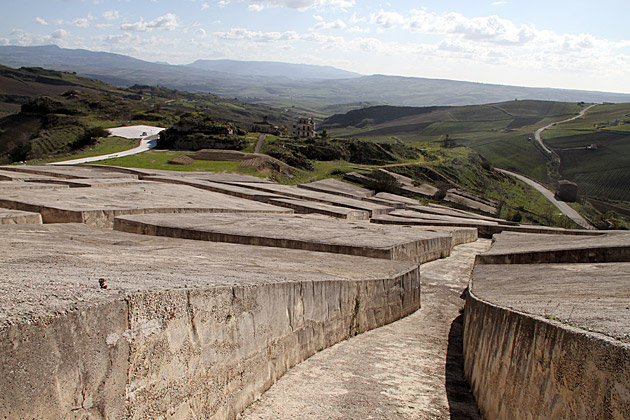
I expected to feel despondent while walking around this modern graveyard, but in truth I experienced something closer to comfort. Nature might have the strength to effortlessly topple our cities and wipe out huge swaths of our population. But we have the ability to make artwork out of the damage, transforming devastation into something eloquent and meaningful. Nature may be more powerful, but humanity is pretty cool.
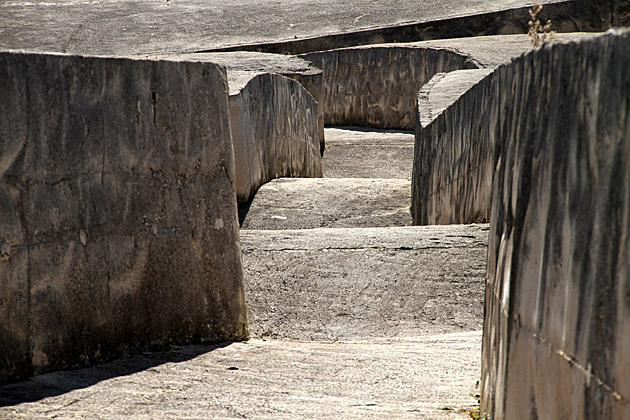
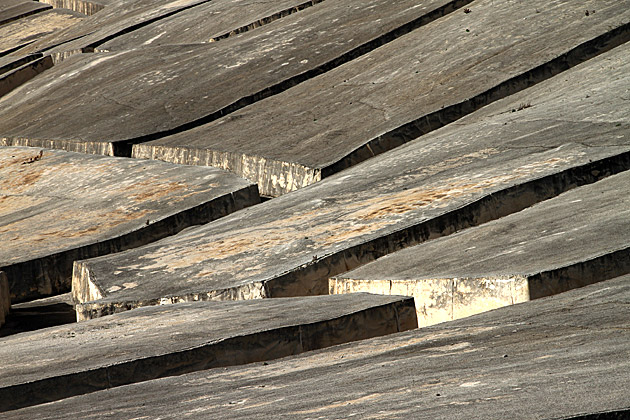
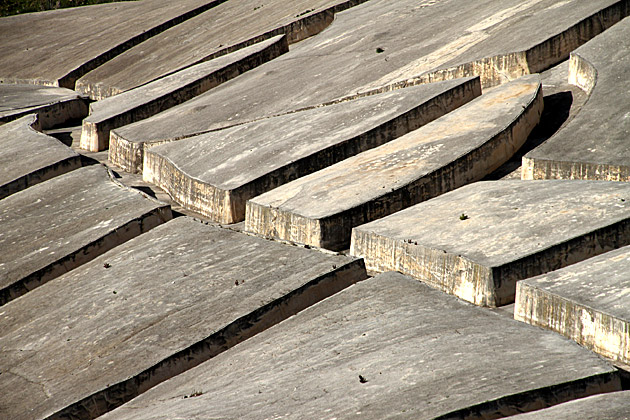
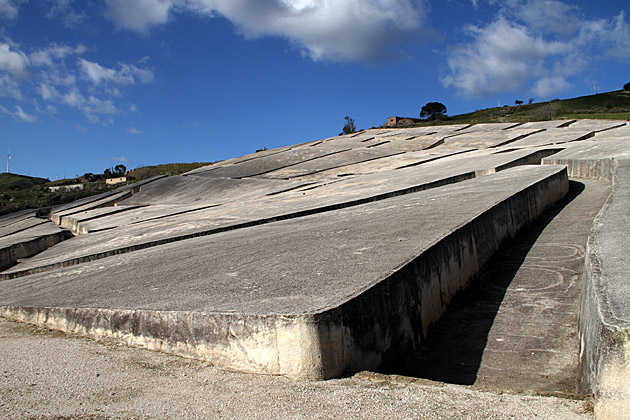

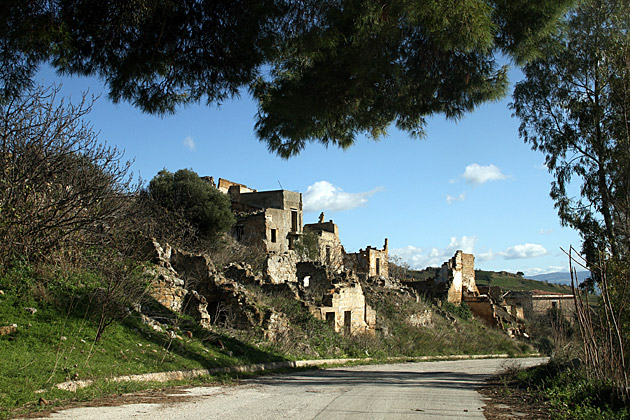
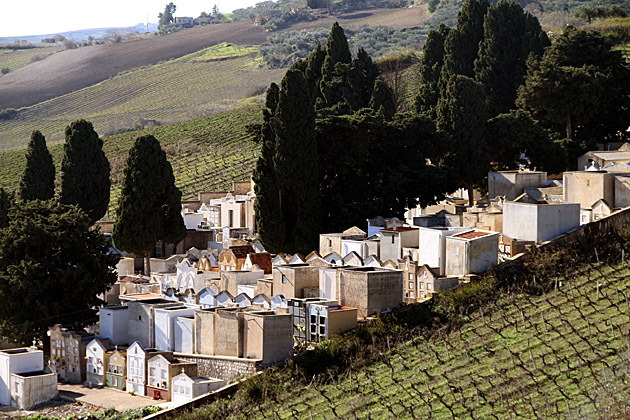

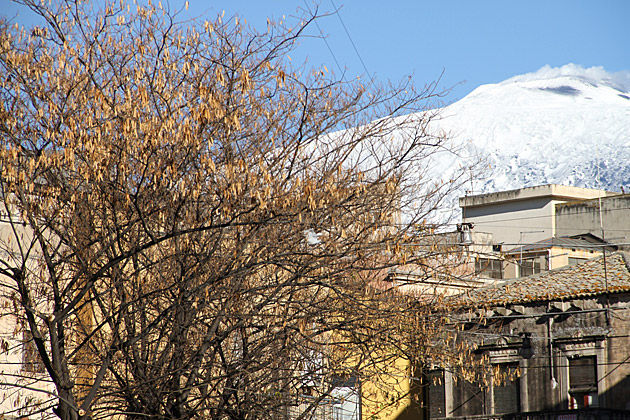
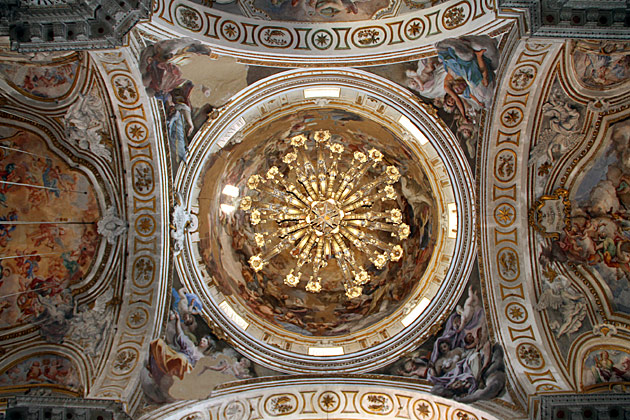
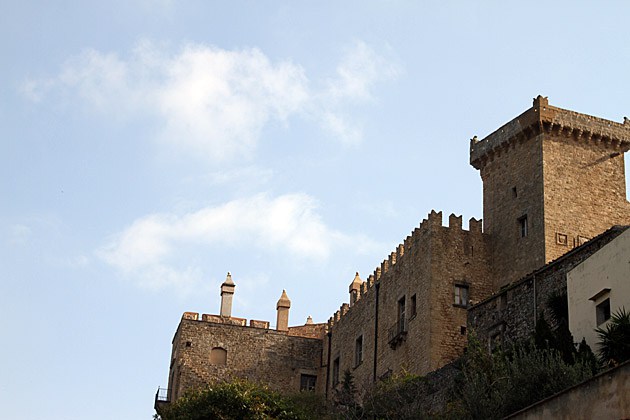

This is some wonderful blog.
i find this town hideously ugly. to my eyes there is nothing beautiful about it. it would have been better to see the ruins in their natural state than seeing them covered in concrete slabs. perhaps the “artist” has connections to a concrete business. gibellina aside, i think your blog is fun. i’ve visited sicilia many times and love the island. it’s been interesting for me to “revisit” through your eyes.
Guys, I’m so happy you made it to Gibellina and the Belice Valley! I was going to suggest it myself. I understand you are going to leave soon, but I am glad you enjoyed your stay in Sicily with all its beauties and “uglies”. Have a safe trip to Sri-Lanka! CiaoFrancesco
My husband grew up in Gibellina; the earthquake is why he left to seek his fortune in Canada. I know this remote, windblown mountain well. Very sad to visit the old cemetery and see all the graves with the same date of death on them, the eyes of young and old staring out from little ceramic plaques. As if they’re still wondering what happened.Part of the reason they covered the ruins with the cretto was to prevent people from returning and crawling through the ruins to locate mementos and things. This fall we roamed through the remnants of another town that came down in 1968 – Poggioreale. There were a few kids there, clambering through the tilting, shattered buildings. A photographer’s dream but not entirely safe…
Hi Lesley, My Father was from Gibellina. In all the times I have visted I have not thought to look for my ancestors graves. I am writing to ask you if you know whether the graves of people deceased before the earthquake still exist?Cheers, Maria Costello
Pingback: The Cretto di Burri
It’s very good piece. What’s interesting to see in this ‘floorplan’ view is the way we have this weird partitioning concept of inside and outside and how concentrated-in-space we live. When you realize every chunk here is a block with a few houses, now imagine the town again, but without the wall, only the floors and people (floating over the concrete, doing their things). That’s a big cloud of people clumped into the landscape. Compare this to the emptiness of the neighbouring farmlands, it’s weird no?
Pingback: Illuminate Buried chandelier to memorialize lost villages in Switzerland « Amazing World Pictures
Pingback: Michael (in) Corleone | For 91 Days in Palermo – Travel Blog
This thing that Alberto Burri has done is amazing. The scale of his art is astonishing, and it preserves the incident and damage in a frozen time period, reminding us of nature’s destructive powers and unexpected occurrences in life. Cool!
Pingback: IGN.DES:: | Ressonância, memória – Memorial para uma vila enterrada
Pingback: Skopje’s Museum of Contemporary Art | For 91 Days in Macedonia – Travel Blog
Wikipedia notes that”The work [Il Cretto di Burri] is the subject of a short documentary by the Dutch filmmaker Petra Noordkamp which was created as commissioned by the Solomon R. Guggenheim Museum to be screened at the Alberto Burri retrospective held at the institution from October 9, 2015 until January 6, 2016.[5“I saw the film, haunting and beautiful, and look forward to visiting the site in October.
While I appreciate the work as a memorial to the lost town, it’s a shame that so much impervious ground cover was constructed on this hillside. It would have been better to allow the runoff to seep into the groundwater to replenish the aquifer.